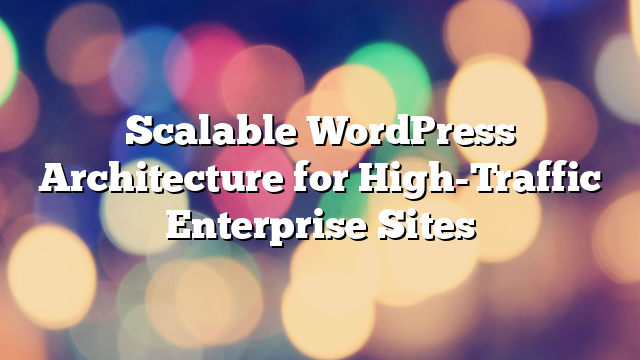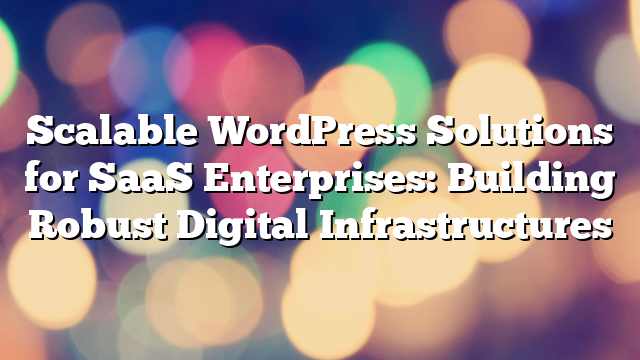Scalable WordPress Architecture for High-Traffic Enterprise Sites
10.04.2025

Why Scalability Matters for Enterprise WordPress
When it comes to enterprise-level digital experiences, WordPress has proven itself as more than just a blogging platform. Enterprises rely on it for mission-critical websites that handle millions of visitors, transactions, and API calls. To meet these demands, a scalable WordPress architecture is essential—not just for performance, but for long-term sustainability, cost-efficiency, and competitive advantage.
Decoupled Architecture: Leveraging Headless WordPress
One of the leading strategies for scaling enterprise WordPress is going headless. By decoupling the front-end from the back-end, content management remains within the familiar WordPress environment, while the front-end is handled by high-performance frameworks like Next.js or React. This separation allows for faster load times, dynamic content rendering, and greater flexibility in deploying apps across platforms.
Optimizing Hosting Infrastructure for Scale
Scalability begins with the hosting environment. Enterprises must move beyond shared hosting and adopt containerized or cloud-native solutions such as Kubernetes, AWS EC2, or Google Cloud. Using load balancers, auto-scaling groups, and distributed caching solutions like Redis or Memcached ensures that WordPress remains responsive under pressure, even during peak traffic spikes.
Database Optimization for Enterprise Workloads
The WordPress database can quickly become a bottleneck at scale. Enterprise-grade setups implement strategies such as database sharding, read/write separation, and advanced indexing. Offloading queries using GraphQL or REST APIs also reduces direct pressure on the database layer, ensuring a more stable performance across global user bases.
Multisite Networks for Global Content Management
Enterprises managing multiple brands or regional websites benefit from WordPress Multisite. This built-in feature allows centralized management of themes, plugins, and user roles across hundreds or thousands of sites. Combined with CDN integration and localized caching, WordPress Multisite becomes a powerful tool for delivering consistent, scalable content worldwide.
Security and Compliance at Scale
Scalability is not just about performance—it’s about securing vast amounts of data. Enterprise sites need to enforce security policies like role-based access, two-factor authentication, and routine vulnerability scans. Compliance with standards such as GDPR, SOC2, and HIPAA often requires custom development and integration with enterprise authentication systems like OAuth or SAML.
Continuous Integration and DevOps for Scalable Deployments
A scalable WordPress site isn’t just built once—it evolves. Enterprises leverage CI/CD pipelines to automate testing, staging, and deployment. Tools like GitHub Actions, Bitbucket Pipelines, and Buddy make it possible to deploy updates with confidence, ensuring high availability and minimizing downtime.
Performance Monitoring and Analytics
At scale, visibility is key. Enterprises use tools like New Relic, Datadog, or Google Cloud Monitoring to keep tabs on performance metrics, database activity, and API latency. Real-time monitoring allows teams to identify bottlenecks and optimize the stack proactively.
Conclusion
Scalable WordPress architecture is not a luxury—it’s a necessity for modern enterprise websites. Whether through headless implementations, advanced hosting, or automated deployment strategies, enterprises can unlock the full power of WordPress while ensuring top-tier performance, security, and reliability.
Looking to scale your enterprise WordPress platform? Explore our solutions at AllWebDev.com or get in touch with our team.



